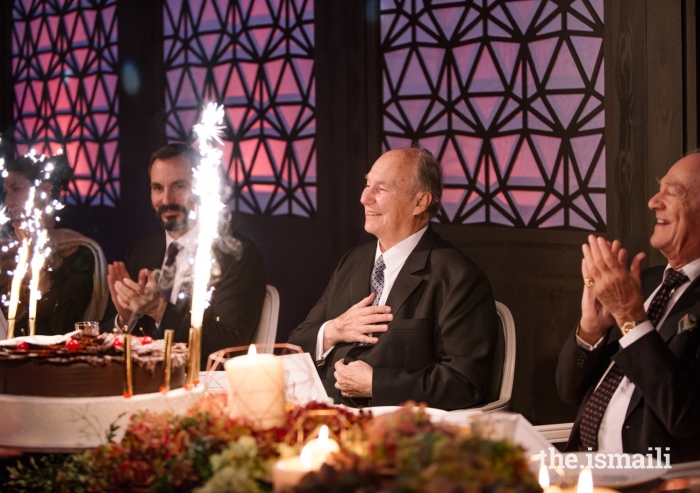Devotional music has occupied an essential niche in our Jamat over centuries. Among other outcomes, devotional music allows us to express our gratitude and excitement, and promotes community cohesion. This form of artistic expression enables murids from all walks of life to engage with their faith and connect with their brothers and sisters.
When Jamal and another Vancouver musician — vocalist Khursheed Nurali — presented their composition, they were very pleased with the response. “It created such love, such unity in the Jamat,” said Nurali. It is this stirring effect of devotional music that continues to render it an integral part of our community’s journey.
Historically, the role of devotional musical expressions during milestone occasions such as the Imam’s Jubilees, has been to unite the Jamat through the art of music. In addition to inspiring Jamati members, these works often spark journeys of personal and spiritual growth for the artists and encourage other talented artists to pursue forms of devotional expression.
Over the years, numerous Canadian artists have followed in Jamal and Nurali’s footsteps, drawing inspiration from the faith to create uplifting devotional pieces. Aly Sunderji, an artist from Vancouver, views music as a “narrative between humans and the divine.” For him, music is a spiritual practice, his devotional pieces allowing him to more deeply engage with the faith.
Throughout Mawlana Hazar Imam’s Diamond Jubilee year, as artists created devotional music in various styles and languages, the global Jamat found a common space for connection and celebration. Calgary-based musician Zaheed Damani expressed awe at the influential impact of his music among the Jamat: “To see [the songs] connect beyond languages, beyond borders, beyond geography is … incredible.” Reflecting the diversity of the Ismaili community in Canada, Damani’s track entitled Aaya Mawlana features lyrics in French, Gujarati, English, Urdu, and Farsi, and also features cameo vocals of both Khursheed Nurali and Shamshu Jamal.
The Diamond Jubilee year was an opportune time for devotional music to be created and shared. Moreover, it has been a time to explore the intersection of unlikely musical elements, bringing to light contemporary forms of devotional expression. During this momentous time, Damani views songwriting as “a vessel through which we have been able to express our gratitude, our aspirations, and our hopes as a community.”
It is important, then, that the sentiments with which these pieces are created are shared with the global Jamat. Ottawa-raised musician Farah Mitha said that, “without a listener, a creator has nothing to create for.”
Canadian artist Taufiq Karmali regards music as a force bringing individuals together. “As an artist, I feel myself merging with so many communities,” said Karmali, noting how devotional music can serve to educate listeners about the Imamat’s worldly contributions.
Mawlana Hazar Imam has spoken of the importance of music, particularly devotional music, in our intra- and inter-faith relations. At the International Colloquium hosted by The Institute of Ismaili Studies in 2003, Mawlana Hazar Imam expressed his recognition of the value of art in building bridges across different cultural landscapes:
“Whatever its vernacular forms, the language of art, more so when it is spiritually inspired, can be a positive barrier-transcending medium of discourse, manifesting the depths of the human spirit.”
Mawlana Hazar Imam’s guidance and support for the arts has been a driving force in enabling the Jamat to showcase its talents. As Mitha sings, “As one Jamat we have strength / Because you guide the way.”
In gratitude, let us continue to express our devotion, unity, and love through the magic of music.
--
To listen to music tracks composed in celebration of the Diamond Jubilee, visit https://the.ismaili/diamond-jubilee-celebration-music.








